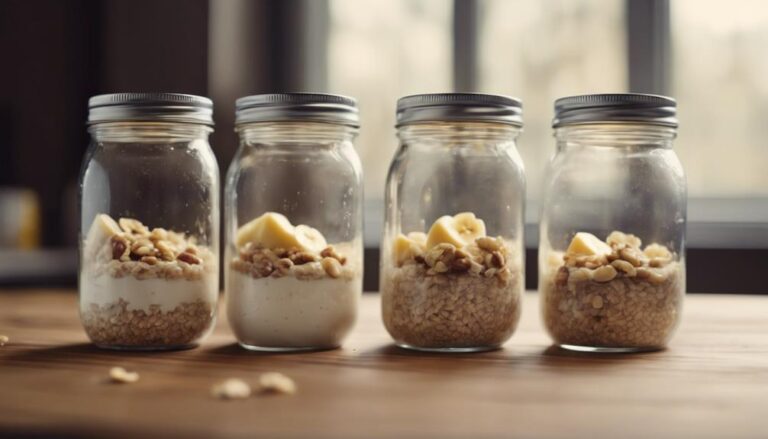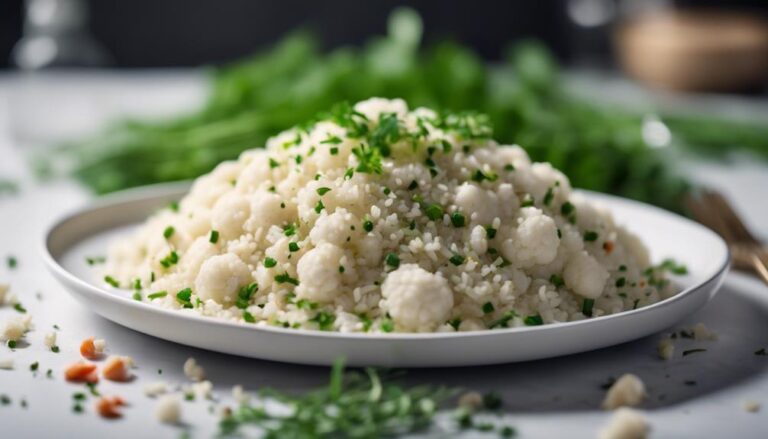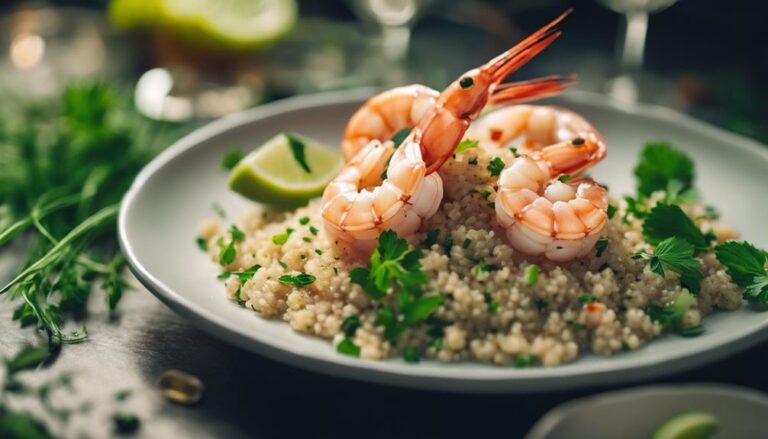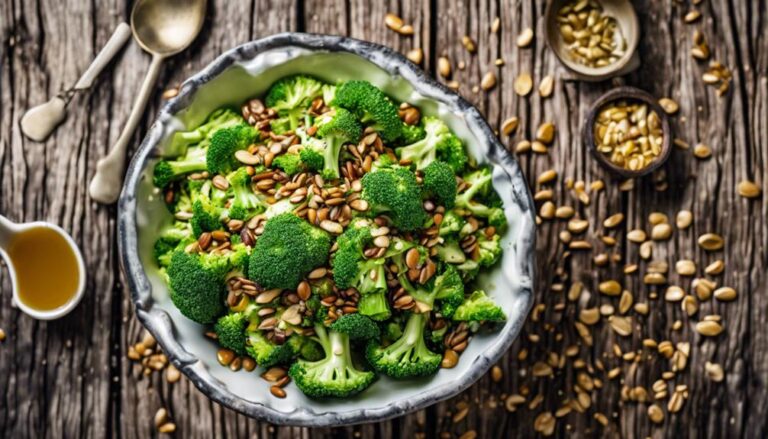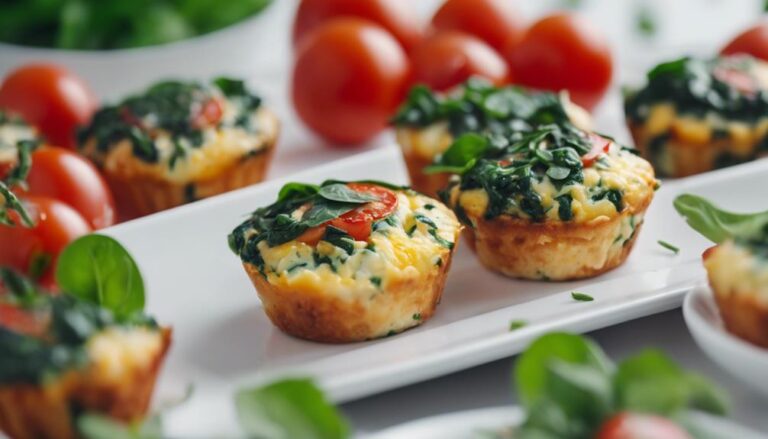Crispy Sous Vide Chickpeas With Paprika
Achieve crispy perfection with sous vide chickpeas seasoned with paprika. Maintain consistency and intensify flavors. Benefit from precise temperature control for ideal texture. Enhance crunchiness through a final oven finish. Experience a crunchy snack like never before.
What You Will Learn Here
- Sous vide cooking ensures even cooking for crispy chickpeas.
- Retains flavors and nutrients with precise temperature control.
- Paprika adds smoky depth and a slightly spicy flavor.
- Healthier alternative to traditional frying methods.
- Convenient, hands-off cooking method for flavorful, crispy chickpeas.
Origin of Chickpeas
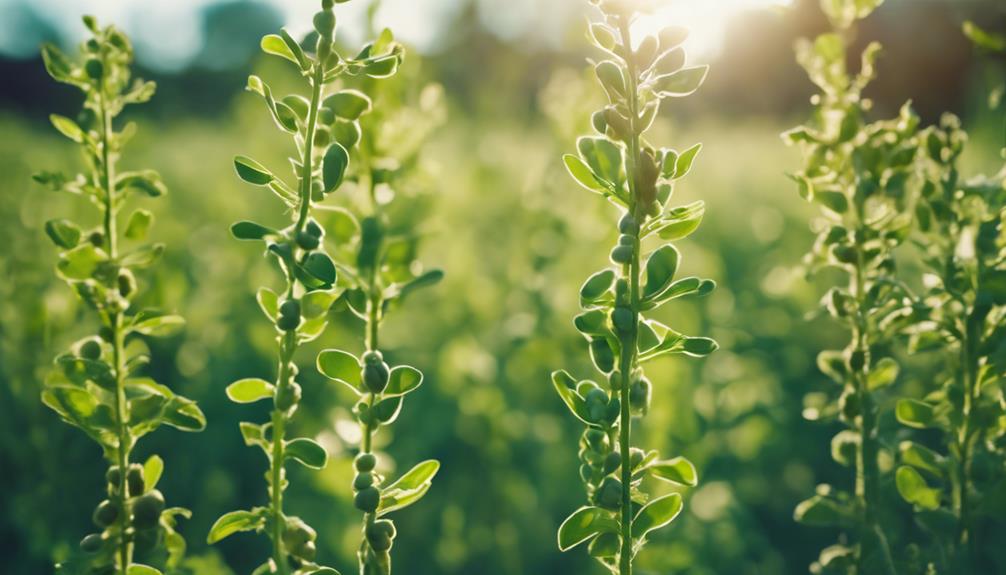
Chickpeas, widely cultivated for millennia, have a rich historical significance rooted in the Middle East. Their culinary versatility and ability to adapt to various dishes showcase their importance in global cuisines.
Additionally, the nutritional benefits of chickpeas, packed with protein, fiber, vitamins, and minerals, have made them a valuable dietary staple throughout history.
Chickpeas: Historical Significance
Having been cultivated over 7,000 years ago in the Middle East, garbanzo beans, also known as chickpeas, hold a significant place in the history of legumes. Originating in the Mediterranean region, chickpeas have been a staple in various cuisines, including Middle Eastern, Indian, and Mediterranean, for centuries. Chickpeas were domesticated around 3,000 BC in modern-day Turkey and spread to other regions like Greece, Egypt, and eventually to India. The versatility and nutritional value of chickpeas made them popular in ancient civilizations, where they were used in dishes like hummus, falafel, and stews. Chickpeas also have a rich history in traditional medicine, being recognized for their health benefits and culinary uses in different cultures around the world.
| Key Points | |||
|---|---|---|---|
| Oldest Cultivated Legumes | Staple in Various Cuisines | Domesticated in Turkey around 3,000 BC | Popular in Ancient Civilizations |
Chickpeas: Culinary Versatility
Culinary versatility in the domain of legumes finds its prime example in the historical journey of chickpeas, tracing their origins back over 7,000 years in the Middle East. Chickpeas, also known as garbanzo beans, are a staple ingredient in various cuisines due to their crispy texture and nutty flavor.
Rich in protein, fiber, vitamins, and minerals, chickpeas offer a nutritious addition to dishes. Their versatility allows them to be incorporated in both savory and sweet recipes, absorbing flavors well and complementing a wide array of spices.
From hummus and falafel to salads, stews, and even desserts made from chickpea flour, these legumes continue to showcase their culinary adaptability over millennia.
Chickpeas: Nutritional Benefits
Originating primarily from the Mediterranean and Middle Eastern regions, chickpeas have long been recognized for their exceptional nutritional benefits. These crispy legumes, also known as garbanzo beans, are packed with plant-based protein and fiber, making them a valuable addition to any diet. Chickpeas aren't only rich in essential nutrients like folate, iron, and manganese but also offer potential health benefits such as lowering cholesterol levels and reducing the risk of heart disease.
The high fiber content, including raffinose, promotes gut health by supporting digestion. Incorporating chickpeas into your meals, whether roasted for a crispy snack or added to salads and stews, can help you meet your protein and fiber needs while reaping the nutritional rewards they offer.
Chickpeas in Different Cuisines
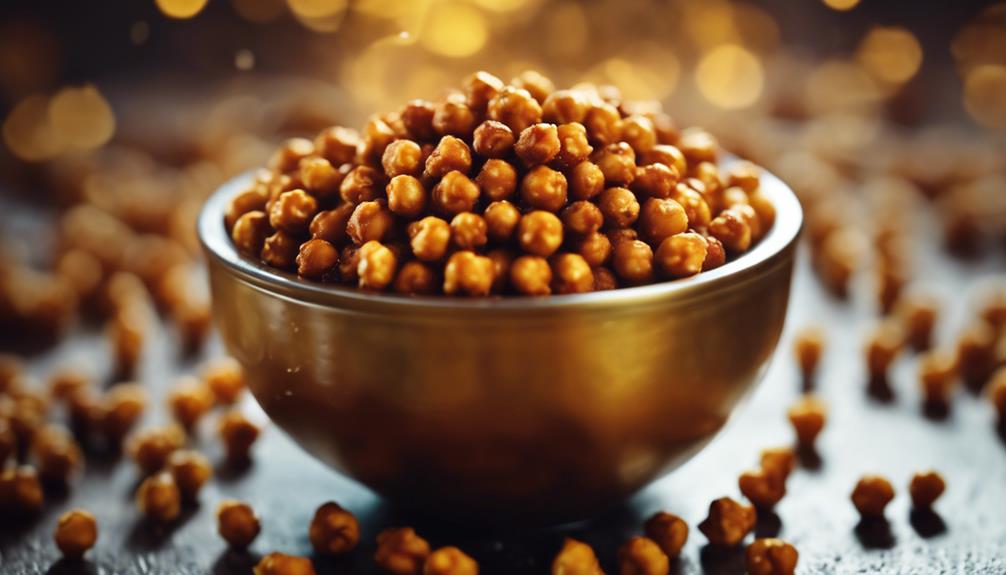
Chickpeas feature prominently in diverse global cuisines, showcasing their versatility in both savory and sweet dishes. Here are three fascinating ways in which chickpeas are used across different culinary traditions:
- Mediterranean Cuisine: In the Mediterranean region, chickpeas are a staple ingredient found in iconic dishes like hummus, falafel, and invigorating salads. Their nutty flavor and creamy texture add depth to these Mediterranean classics, making them beloved worldwide.
- Indian Cuisine: Indian cuisine embraces chickpeas in a variety of dishes, such as the aromatic chana masala and flavorful chickpea curry. Chickpeas bring a hearty and satisfying element to these spicy and aromatic dishes, delighting taste buds with every bite.
- Middle Eastern Cuisine: Middle Eastern cuisine celebrates chickpeas in dishes like ful medames, a luscious stew featuring chickpeas, garlic, and a hint of lemon. This dish exemplifies the rich and earthy flavors that chickpeas can offer, creating a comforting and nourishing meal experience.
Crunchy Chickpea Recipe Ideas
When exploring crunchy chickpea recipe ideas, consider harnessing the magic of aquafaba – the viscous liquid from canned chickpeas.
Aquafaba can be used in various chickpea recipes to add a unique texture and binding properties. Additionally, it can be incorporated into desserts as a vegan egg substitute, offering a versatile ingredient for both savory and sweet dishes.
Aquafaba Magic in Recipe
Harness the aquafaba's unique properties to enhance the crispiness and flavor profile of your sous vide chickpeas, revealing a world of crunchy chickpea recipe ideas.
- Whipped Aquafaba: Transform aquafaba into a fluffy foam to coat chickpeas before baking, creating a delicate and airy texture.
- Aquafaba Meringue: Use aquafaba to make crunchy meringue toppings for your chickpeas, adding a sweet and crispy element to your dish.
- Aquafaba Coating: Dip chickpeas in aquafaba before rolling them in seasoned breadcrumbs for a crispy, golden coating that will elevate your chickpea dish to new heights.
These techniques leverage aquafaba's emulsifying and foaming properties, offering a vegan-friendly and innovative approach to enhancing the crunchiness of your chickpeas.
Aquafaba in Chickpea Recipes
Utilize aquafaba's unique emulsifying properties to create irresistibly crunchy chickpea dishes that elevate your culinary repertoire. When incorporating aquafaba into your chickpea recipes, consider these tips:
- Whipped Aquafaba: Whip aquafaba into a fluffy consistency to coat chickpeas before baking, creating a crispy outer layer that enhances texture and flavor.
- Aquafaba Marinade: Marinate chickpeas in aquafaba mixed with seasonings like paprika or cumin to infuse them with flavor and guarantee a crispy finish when roasted.
- Aquafaba Batter: Dip chickpeas in aquafaba-based batter before frying or air-frying for a vegan and crunchy twist on traditional fried chickpeas.
Incorporating aquafaba creatively into your chickpea recipes won't only appeal to vegans but also add a crispy dimension that everyone will enjoy.
Aquafaba in Desserts
To explore the versatility of aquafaba in dessert recipes, consider its unique ability to add a delightful crunch to your chickpea-based sweet creations. When incorporating aquafaba in baking for vegan desserts, you open up a world of possibilities. Here are three ways aquafaba can revolutionize your dessert game:
- Whipping Wonder: Whip aquafaba into stiff peaks to create light and airy meringues that will melt in your mouth.
- Mousse Magic: Use aquafaba as a base for creamy and velvety mousses that rival traditional egg-based versions.
- Cookie Crunch: Add aquafaba to your cookie dough for a vegan-friendly twist that results in perfectly crispy and chewy treats.
With aquafaba, baking vegan desserts becomes a delightful and innovative experience.
Chickpea Roasting Techniques
When roasting chickpeas, understanding different methods is essential for achieving desired results.
Exploring various flavoring and seasoning options can elevate the taste profile of the chickpeas.
Mastering texture and doneness levels is key to creating the perfect crispy snack.
Roasting Methods Overview
Consider employing various roasting techniques to enhance the flavor and texture of chickpeas. Roasting chickpeas on a sheet pan in the oven is a popular method that yields a crispy exterior and creamy interior. Tossing the chickpeas in paprika before roasting adds a smoky depth to their taste. Here is a comparison of different roasting methods for chickpeas:
| Roasting Method | Description | Benefits |
|---|---|---|
| Oven Roasting | Cook on a sheet pan in the oven | Even cooking, crispy texture |
| Air Frying | Use an air fryer for quick, crispy results | Healthier option, faster cooking time |
| Stovetop Roasting | Roast in a skillet on the stovetop | Control over heat, suitable for small batches |
Flavoring and Seasoning
Roasting chickpeas with paprika not only enhances their flavor but also infuses them with a smoky depth that elevates their taste profile. Seasoning the chickpeas with paprika adds a unique smoky and slightly spicy element, enriching the overall taste experience.
Paprika, known for its rich red color and earthy undertones, provides a versatile way to add depth of flavor to the roasted chickpeas. The use of paprika in seasoning can deliver a distinctive barbecue-like essence, making the chickpeas more flavorful and appealing.
Texture and Doneness
To achieve ideal texture and doneness when roasting chickpeas using sous vide cooking, precise temperature control is essential for ensuring a perfectly crispy outcome. Sous vide cooking allows for consistent cooking throughout the chickpeas, ensuring an even texture. Once cooked sous vide, finishing the chickpeas in the oven can enhance their crispiness, providing a delightful contrast to the tender interior. The method of sous vide cooking also helps to retain the natural flavors and nutrients of the chickpeas, making them a healthier and more flavorful snack option. By mastering the sous vide technique, you can create crispy chickpeas seasoned with paprika that are sure to impress your taste buds.
| Benefits of Sous Vide Cooking for Chickpeas | ||
|---|---|---|
| – Precise temperature control | – Even cooking throughout the chickpeas | – Retention of flavors |
| – Consistent results | – Healthier option | – Enhanced crispiness |
Final Thoughts
In a nutshell, the sous vide cooking method offers a convenient and reliable way to achieve perfectly crispy chickpeas with minimal effort. By utilizing sous vide, you can precisely control the temperature to guarantee that the chickpeas are cooked to perfection every time.
The infusion of paprika during the sous vide process enhances the flavor profile by allowing deep penetration into the chickpeas, resulting in a rich and aromatic taste experience.
Furthermore, the sous vide technique preserves the natural texture and nutrients of the chickpeas, offering a healthier alternative to traditional frying methods. With minimal hands-on time required, sous vide chickpeas aren't only easy to prepare but also yield consistent results that make them ideal for meal prep or snacking.
This method provides a hassle-free way to enjoy a delicious and nutritious snack without compromising on taste or quality. To summarize, crispy sous vide chickpeas with paprika are a delightful treat that showcases the benefits of this innovative cooking technique.
Frequently Asked Questions
Why Are My Roasted Chickpeas Not Crunchy?
Your roasted chickpeas might lack crunch due to oven temperature being too low, insufficient roasting time, high chickpea moisture content, or uneven seasoning distribution. Adjust oven settings, increase roasting time, dry chickpeas, and evenly season for crispiness.
Why Add Baking Soda When Cooking Chickpeas?
Adding baking soda when cooking chickpeas benefits their texture by breaking down pectin for tenderness and enhancing browning for flavor. The magic of baking soda helps create a perfect balance in sous vide cooking, resulting in chickpeas of unparalleled perfection.
Why Are My Dried Chickpeas Still Hard After Soaking?
If your dried chickpeas are still hard after soaking, it could be due to factors like age, quality, or storage conditions. Adding acidic ingredients to the soak water or pressure cooking them can help soften chickpeas faster.
Do Chickpeas Have Oil?
Chickpeas do not contain oil naturally, but they can absorb it during cooking. Adding oil enhances flavor and helps achieve a crisp texture. Various oils like olive, avocado, or coconut can be used for cooking chickpeas.
Conclusion
To conclude, crispy sous vide chickpeas with paprika offer a delightful fusion of texture and flavor. By utilizing the sous vide cooking method, the chickpeas achieve a perfect crunchiness without sacrificing their natural nuttiness.
The addition of paprika adds a smoky and slightly spicy kick to elevate the dish. Whether enjoyed as a snack or as a topping for salads and soups, these chickpeas are a versatile and delicious option for any occasion.







